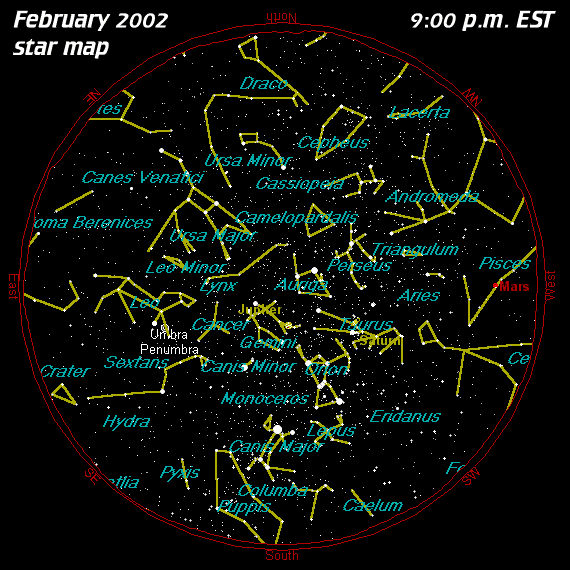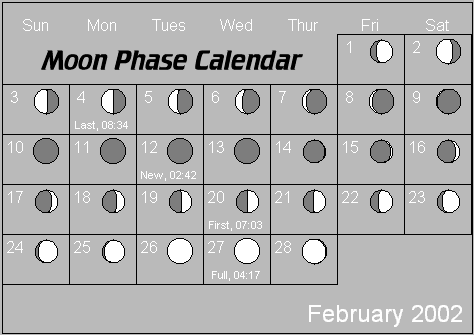

FEBRUARY 2002


FEBRUARY 2002
Print Large Sky Charts For 9 p.m.: NORTH | EAST | SOUTH | WEST | ZENITH
![[Moon Phases]](../moonphases/2002-02-phases.jpg) |
|---|
![[Saturn Occultation]](orion.gif) |
|---|
| ORION DOMINATES THE WINTER SKY in this wide-angle photo taken from Australia by Gary A. Becker in February of 2001. The most luminous star in the sky, Rigel, is the lower right leg of the Orion, the Hunter, as we look at him. Betelgeuse, above and to the left could go supernova at any time in the next several million years. Near the bottom left of the photo is the brightest star of the night, Sirius, the Dog Star. |
![]() FEBRUARY 17-20, 2002:
Spectacular Saturn Occultation
FEBRUARY 17-20, 2002:
Spectacular Saturn Occultation
![[Saturn Occultation]](2-02-saturn-occultation.gif)
MOON OCCULTS SATURN: This is the way the Saturn occultation will appear to the unaided eye or through binoculars or spotting scopes. Keep in mind that telescopes will often flip left and right around, as well as invert the image. Gary A. Becker diagram...
![]() FEBRUARY 21-22, 2002:
Bad, Bad Weather
FEBRUARY 21-22, 2002:
Bad, Bad Weather
![]() FEBRUARY 24, 2002:
Are You Sirius?
FEBRUARY 24, 2002:
Are You Sirius?
![[Sirius, The Dog Star]](2-south.gif)

